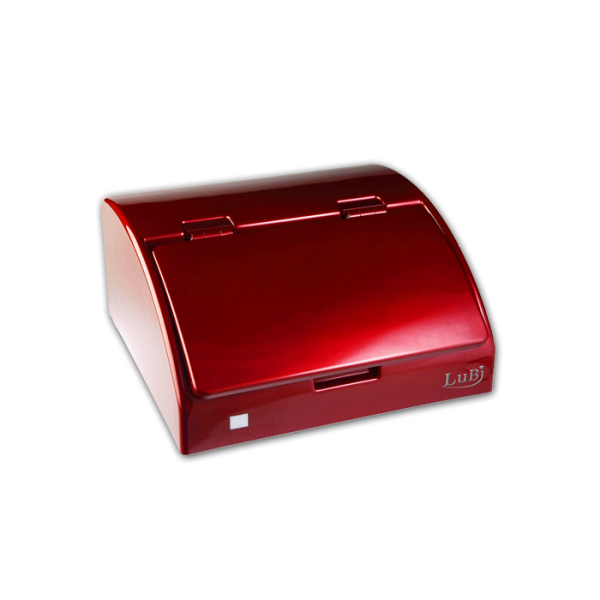LuBi – Microplate Luminometer
Some key features and functionalities of a typical microplate luminometer :
1. Detection modes: A microplate luminometer can offer multiple detection modes, including luminescence, fluorescence, and absorbance. However, its primary function is to measure luminescence signals emitted from the samples.
2. Sample capacity: The instrument is designed to accommodate microplates with various well formats, such as 96-well or 384-well plates. This allows for simultaneous measurements of multiple samples, enabling high-throughput analysis.
3. Sensitivity and dynamic range: Microplate luminometers are optimized for detecting low levels of light emitted during luminescent reactions. They have a wide dynamic range that allows for accurate detection across a broad range of luminescence intensities.
4. Integration and automation: Many microplate luminometers are equipped with robotic integration capabilities, enabling seamless integration with liquid handling systems and other automated laboratory equipment. This facilitates high-throughput workflows and reduces hands-on time.
5. Software and data analysis: Microplate luminometers come with dedicated software for instrument control, data acquisition, and analysis. The software allows for the selection of specific detection parameters, data processing, and export in various formats for further analysis.
6. Assay versatility: Microplate luminometers support a variety of luminescent assays, including reporter gene assays, ATP-based assays, luciferase-based assays, cell viability assays, and protein-protein interaction assays. The instrument's versatility makes it suitable for a wide range of applications.
Fields of application :
Microplate luminometers have a wide range of applications in various fields of research and diagnostics. Some common fields of application include :
1. Molecular biology: Microplate luminometers are extensively used in molecular biology research for various assays, such as reporter gene assays, gene expression analysis, DNA quantification, DNA-protein interactions, and enzyme activity assays.
2. Drug discovery: Microplate luminometers play a crucial role in drug discovery by enabling high-throughput screening of compounds for drug efficacy, toxicity, and mechanism of action. They are used in assays like high-throughput screening (HTS), kinase assays, protein-protein interaction studies, and GPCR (G protein-coupled receptor) assays.
3. Cell-based assays: Microplate luminometers are employed in cell-based assays to measure cellular processes, viability, proliferation, and apoptosis. Examples include ATP-based cell viability assays, luciferase-based reporter assays, and luminescent imaging of cellular events.
4. Immunology and immunoassays: Microplate luminometers are used in immunoassays for the detection and quantification of biomarkers, antibodies, cytokines, and other immune-related molecules. This includes ELISA (enzyme-linked immunosorbent assay), luminescent immunoassays, and protein-protein interaction studies.
5. Environmental monitoring: Microplate luminometers find applications in environmental monitoring and analysis. They can be used to detect and quantify specific contaminants, toxins, or microbial activity in environmental samples.
6. Microbiology and microbial assays: Microplate luminometers are used in microbial research to study microbial growth, antimicrobial susceptibility testing, microbial biofilm formation, and microbial enzyme activity assays.
7. Biotechnology and bioengineering: Microplate luminometers are employed in various biotechnological and bioengineering applications, such as recombinant protein expression, bioluminescence assays, metabolic pathway analysis, and enzyme kinetics.
8. Clinical diagnostics: Microplate luminometers are utilized in clinical laboratories for diagnostic purposes. They can be used in immunoassays, molecular diagnostics, and infectious disease testing.
Bioluminescence :
It is the production and emission of light by living organisms and a form of chemiluminescence. Read more
In Vivo Bioluminescence Analyses :
The Bioluminescence analyses uses microplate luminometers. Read more


